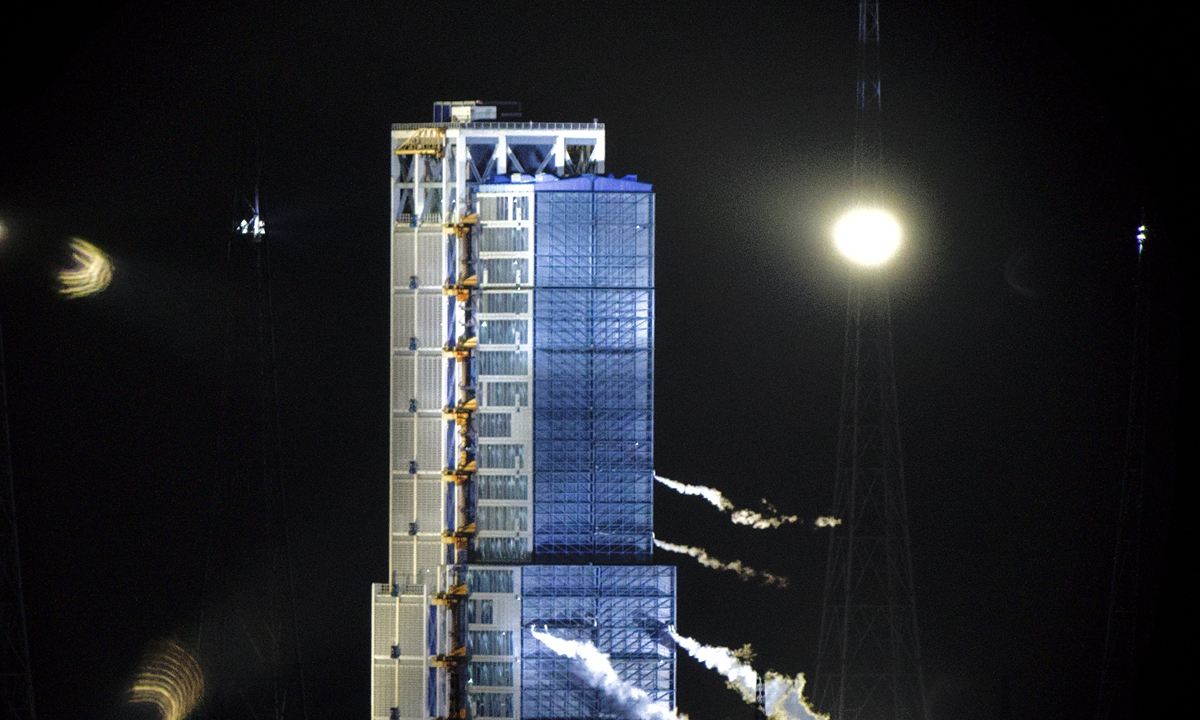University research team committing to China’s first-ever lunar sample return mission
Source: Global Times Published: 2020/12/2 12:37:18

Long March-5 Y5 carrier rocket commissioned for the Chang'e-5 lunar mission has started fuel injection on Monday, and is set to launch the probe on Tuesday between 4 to 5 am at the Wenchang Space Launch Center in South China's Hainan Province on Tuesday. Photo: VCG
As part of the successful landing of China's Chang'e-5 craft, the nation's first ever sample return mission, Tianjin University's Space Mechanics Team has engaged in building an experimental landing site to test landing on an extraterrestrial lunar body.
"We designed and built a simulated moon surface using life-like lunar terrain including rocks, craters and inclines, offering more than 20 terrain combination scenarios, based on technical parameter requirements," read a statement provided to the Global Times, citing Professor Cui Yuhong.
The team also simulated the moon's gravity, roughly one-sixth of that on the Earth, to test the force and deformation of the lander's soft-landing design.
The team contributed to the sample return mission through a study testing the interaction between rocket plume and lunar dust, shedding light on the design of Chang'e-5 probe's soft-landing control system.
The team's research methods and breakthroughs, already adopted by the Chang'e-3, 4 and 5 landers, will be applied to future Chang'e landers, according to the university.
Posted in: INDUSTRIES